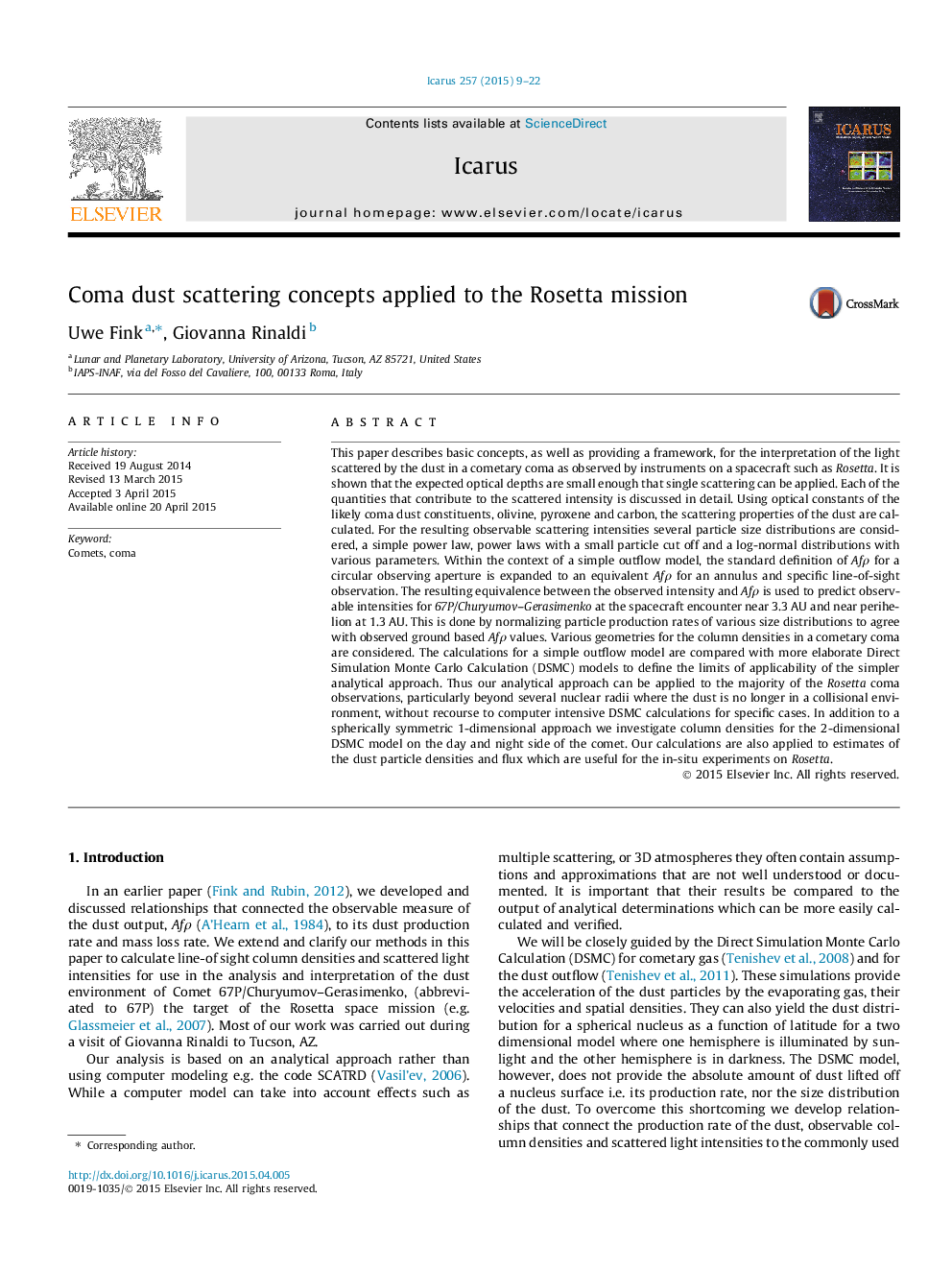| کد مقاله | کد نشریه | سال انتشار | مقاله انگلیسی | نسخه تمام متن |
|---|---|---|---|---|
| 8136095 | 1523533 | 2015 | 14 صفحه PDF | دانلود رایگان |
عنوان انگلیسی مقاله ISI
Coma dust scattering concepts applied to the Rosetta mission
ترجمه فارسی عنوان
مفاهیم پراکندگی گرد و غبار در مأموریت روزته اعمال می شود
دانلود مقاله + سفارش ترجمه
دانلود مقاله ISI انگلیسی
رایگان برای ایرانیان
کلمات کلیدی
کمیته ها، کما،
موضوعات مرتبط
مهندسی و علوم پایه
علوم زمین و سیارات
علوم فضا و نجوم
چکیده انگلیسی
This paper describes basic concepts, as well as providing a framework, for the interpretation of the light scattered by the dust in a cometary coma as observed by instruments on a spacecraft such as Rosetta. It is shown that the expected optical depths are small enough that single scattering can be applied. Each of the quantities that contribute to the scattered intensity is discussed in detail. Using optical constants of the likely coma dust constituents, olivine, pyroxene and carbon, the scattering properties of the dust are calculated. For the resulting observable scattering intensities several particle size distributions are considered, a simple power law, power laws with a small particle cut off and a log-normal distributions with various parameters. Within the context of a simple outflow model, the standard definition of AfÏ for a circular observing aperture is expanded to an equivalent AfÏ for an annulus and specific line-of-sight observation. The resulting equivalence between the observed intensity and AfÏ is used to predict observable intensities for 67P/Churyumov-Gerasimenko at the spacecraft encounter near 3.3Â AU and near perihelion at 1.3Â AU. This is done by normalizing particle production rates of various size distributions to agree with observed ground based AfÏ values. Various geometries for the column densities in a cometary coma are considered. The calculations for a simple outflow model are compared with more elaborate Direct Simulation Monte Carlo Calculation (DSMC) models to define the limits of applicability of the simpler analytical approach. Thus our analytical approach can be applied to the majority of the Rosetta coma observations, particularly beyond several nuclear radii where the dust is no longer in a collisional environment, without recourse to computer intensive DSMC calculations for specific cases. In addition to a spherically symmetric 1-dimensional approach we investigate column densities for the 2-dimensional DSMC model on the day and night side of the comet. Our calculations are also applied to estimates of the dust particle densities and flux which are useful for the in-situ experiments on Rosetta.
ناشر
Database: Elsevier - ScienceDirect (ساینس دایرکت)
Journal: Icarus - Volume 257, 1 September 2015, Pages 9-22
Journal: Icarus - Volume 257, 1 September 2015, Pages 9-22
نویسندگان
Uwe Fink, Giovanna Rinaldi,
